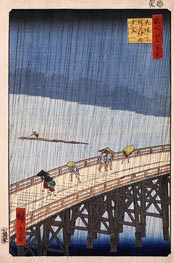Ando Hiroshige Giclée Fine Art Prints
1797-1858
Japanese Ukiyo-e Printmaker
1 Ando Hiroshige Artworks
SKU: 16892-HIA
Ando Hiroshige
Original Size:37 x 24 cm
Metropolitan Museum of Art, New York, USA
Ando Hiroshige
Original Size:37 x 24 cm
Metropolitan Museum of Art, New York, USA
